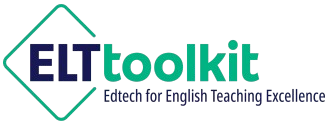About the Author
Author: Brent Warner
 Hi! Some of you may know me from my technology posts for the TESOL blog, or maybe for facilitating the inaugural TESOL AI Workshop. Others may know me from years of presenting and sharing at edtech organizations like CUE or ISTE, or maybe you caught one of my keynotes when I spoke at your school. Still others may know me as one half of the hosting duo behind the DIESOL podcast—the first (and still only, I think!) podcast with a specific focus on edtech and innovation in English language teaching. Or maybe you don’t know me at all, in which case, Hi!—again!
Hi! Some of you may know me from my technology posts for the TESOL blog, or maybe for facilitating the inaugural TESOL AI Workshop. Others may know me from years of presenting and sharing at edtech organizations like CUE or ISTE, or maybe you caught one of my keynotes when I spoke at your school. Still others may know me as one half of the hosting duo behind the DIESOL podcast—the first (and still only, I think!) podcast with a specific focus on edtech and innovation in English language teaching. Or maybe you don’t know me at all, in which case, Hi!—again!
Oh yeah, I’m also a full-time teacher.
I think it’s fair to say that I’ve kept myself busy trying to bridge the world of innovation in technology with supporting multilingual learners of English. For years, nerds like me have been tucked away in the CALL (computer-assisted language learning) corners of the language teaching universe, offering help to teachers who wanted to modernize and, honestly, understanding those who just couldn’t handle more than their already overwhelming load. These days, though, it’s getting harder and harder to ignore the need to level up our approach to teaching to better match the needs of our current students.
My approach has always been about baby steps: Try one thing, see how it goes, iterate, then try again. I usually tell my colleagues to just try one new thing a semester. One new thing is enough, and that’s great because it means that this ELT Toolkit can theoretically last you well past your retirement. Hopefully you’ll get through it faster than that, but theoretically.
When TESOL reached out to me about collaborating on this project, I was particularly happy that they said they wanted “my voice.” You’ll probably notice that I prefer to guide you through these tools as a supportive guide with the occasional joke, rather than as a strict headmaster who’s ready to snap a piece of chalk at anyone who goes outside the guidelines. I hope that my style, while possibly outside the conventional norms, also helps you see that a little flexibility and light-heartedness can go a long way in pursuing creativity with edtech in the ELT classroom.
For now, I just want to say thank you for trusting me on this learning journey. You can always reach out to me using the feedback button at the bottom of every tool, or if you want to keep up with my regular explorations, I encourage you to follow me on LinkedIn. And if you ever see me at a convention and want to ensure we’re best friends for life, just bring me a locally roasted cup of coffee (black, naturally!).
I’ll see you on the inside!

